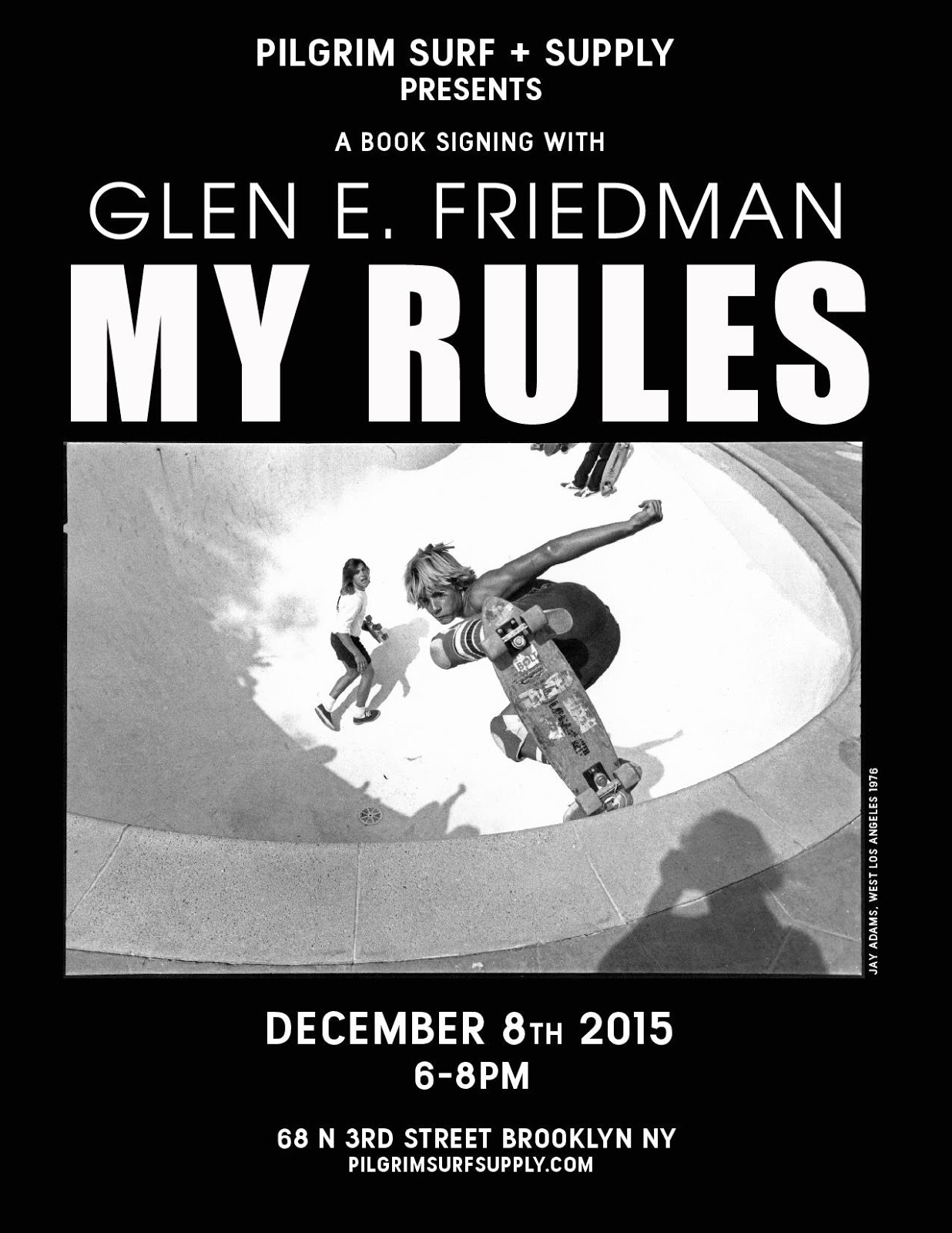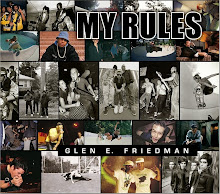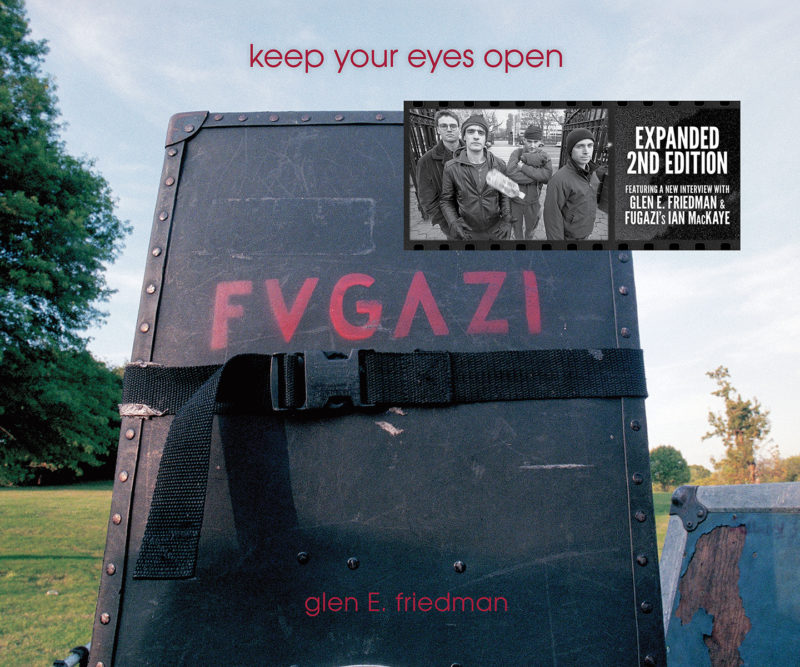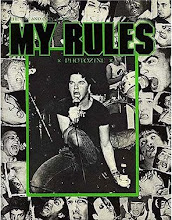Friday, June 30, 2017
HR and H.R.
from my Instagram
Labels:
Bad brains,
H.R.,
Henry Rollins,
HR,
Punk,
punk rock,
the Whisky
Thursday, June 29, 2017
Wednesday, June 28, 2017
READ:
Veganism in a World Full of Harm
from Ecorazzi:
I move in circles with people who care about social justice issues and who also care about animals. While such people are often open to being vegan, they frequently object to veganism for three reasons, even when they understand and agree to the moral principles underpinning it.
The first objection is to the fact that we live in an unjust world, in which animals are harmed frequently and indirectly. Those who try to diminish the moral imperative of veganism on these grounds overlook the fact that our lives and our actions also cause indirect harm to other humans. We would never use the existence of indirect harm as a justification to harm other humans or to abrogate their rights avoidably and directly whenever it suited us.
Our behaviour towards others is undergirded by certain moral principles that compel us to refrain from causing unnecessary harm to those others. This is why we don’t steal from people, even though it would be to our material advantage to do so. This is why we don’t allow arguments to escalate into physical confrontations, even when it may benefit us physiologically (by releasing nervous energy) to do so. This is why we don’t shove people out of our way when we want to get to the front of a long checkout queue, even though it could save us time to do so.
Further, we bring nonhuman animals into the world with the express purpose of exploiting and killing them. When we become vegan, we acknowledge that there is no good reason for us to do so, and that we are personally going to abstain from those rights violations because they run counter to the principles on which we have based our lives. When we go vegan, we are refusing to act against the precepts of justice, fairness, and nonviolence that we perceive to be central to good moral behavior. When we stop using animals, we are acting in a way that demonstrates that we respect the rights of others not to be treated as things that exist for us to use.
Just as we would never use the existence of indirect harm as a justification for directly and deliberately harming humans, so too must we apply this moral congruity to nonhumans. If we truly uphold the principles to which we claim to subscribe, we can and must refuse to participate in that system that directly exploits nonhuman beings by treating them solely as a means to our ends; this refusal is veganism (for more on the topic of incidental harm, see here and here).
The second objection I hear to the moral imperative of veganism is that there are so many other issues to tackle. While this is true, we can address those issues while wearing synthetic shoes, eating plants, and not attending animal shows. Veganism is not an obstacle to us participating in other forms of pro-justice work; in fact, for many (including me), it is a gateway to other areas of social justice. Veganism doesn’t require anyone to sacrifice their human rights work in order to pursue animal advocacy; it merely requires that at the very minimum one stops eating, wearing and otherwise using animals. As Francione and Charlton write in Eat Like You Care, “How does eating, for example, tofu instead of steak impede your ability to fight for human rights causes? It doesn’t. If anything, a healthy vegan diet will give you more energy to pursue those causes.”
The third objection is not particular to veganism, but is also heard among those who are reluctant to get involved in social justice issues because they are not sure that they can have any impact: “what difference can one person make?” As a matter of justice, this is a nonsensical question. We would never continue to participate in rights violations in the human context because we thought that our opting out wouldn’t make a difference to those whose rights are being violated if we stopped. If we acknowledge the wrongness of our actions, and we persist in those actions, then we are acting against our own consciences and principles, and this is not something we can ever justify to ourselves, as hard as we might try.
Putting aside the fact that animal agriculture exists only because there is a demand for it, and that everyone who refuses to participate in that system is helping to drive down demand, we have to take responsibility for our own behaviour and should use our own consciences as a touchstone for morality. In a world full of harm, be just, be fair, and be respectful of the rights of all beings—human and nonhuman; otherwise, you’re choosing to say “I knew, and I did nothing.”
Labels:
Environment,
vegan
Tuesday, June 27, 2017
Noam Chomsky - On Being Truly Educated
Noam Chomsky is an eminent American theoretical linguist, cognitive scientist and philosopher, who radically changed the arena of linguistics by assuming language as a uniquely human, biologically based cognitive capacity. He suggested that innate traits in the human brain give birth to both language and grammar. The most important figure in “cognitive revolution” and “analytic philosophy”, Chomsky’s wide-ranging influence also extends to computer science and mathematics.
Labels:
education,
fulfillment,
Noam Chomsky
Monday, June 26, 2017
School of Life Monday:
POLITICAL THEORY - John Maynard Keynes
John Maynard Keynes was arguably the greatest economist of the 20th century. He discovered the idea that governments should stimulate demand during economic downturns – and was the creator of both the IMF and the World Bank.
Labels:
corruption,
economy,
Keynes,
philosophy,
Politics,
world economic crisis
Sunday, June 25, 2017
Modern art was CIA 'weapon'
from the INDEPENDENT
Revealed: how the spy agency used unwitting artists such as Pollock and de Kooning in a cultural Cold War
By Frances Stonor Saunders
Revealed: how the spy agency used unwitting artists such as Pollock and de Kooning in a cultural Cold War
By Frances Stonor Saunders
For decades in art circles it was either a rumour or a joke, but now it is confirmed as a fact. The Central Intelligence Agency used American modern art - including the works of such artists as Jackson Pollock, Robert Motherwell, Willem de Kooning and Mark Rothko - as a weapon in the Cold War. In the manner of a Renaissance prince - except that it acted secretly - the CIA fostered and promoted American Abstract Expressionist painting around the world for more than 20 years.
The connection is improbable. This was a period, in the 1950s and 1960s, when the great majority of Americans disliked or even despised modern art - President Truman summed up the popular view when he said: "If that's art, then I'm a Hottentot." As for the artists themselves, many were ex- communists barely acceptable in the America of the McCarthyite era, and certainly not the sort of people normally likely to receive US government backing.
Why did the CIA support them? Because in the propaganda war with the Soviet Union, this new artistic movement could be held up as proof of the creativity, the intellectual freedom, and the cultural power of the US. Russian art, strapped into the communist ideological straitjacket, could not compete.
The existence of this policy, rumoured and disputed for many years, has now been confirmed for the first time by former CIA officials. Unknown to the artists, the new American art was secretly promoted under a policy known as the "long leash" - arrangements similar in some ways to the indirect CIA backing of the journal Encounter, edited by Stephen Spender.
The decision to include culture and art in the US Cold War arsenal was taken as soon as the CIA was founded in 1947. Dismayed at the appeal communism still had for many intellectuals and artists in the West, the new agency set up a division, the Propaganda Assets Inventory, which at its peak could influence more than 800 newspapers, magazines and public information organisations. They joked that it was like a Wurlitzer jukebox: when the CIA pushed a button it could hear whatever tune it wanted playing across the world.
The next key step came in 1950, when the International Organisations Division (IOD) was set up under Tom Braden. It was this office which subsidised the animated version of George Orwell's Animal Farm, which sponsored American jazz artists, opera recitals, the Boston Symphony Orchestra's international touring programme. Its agents were placed in the film industry, in publishing houses, even as travel writers for the celebrated Fodor guides. And, we now know, it promoted America's anarchic avant-garde movement, Abstract Expressionism.
Initially, more open attempts were made to support the new American art. In 1947 the State Department organised and paid for a touring international exhibition entitled "Advancing American Art", with the aim of rebutting Soviet suggestions that America was a cultural desert. But the show caused outrage at home, prompting Truman to make his Hottentot remark and one bitter congressman to declare: "I am just a dumb American who pays taxes for this kind of trash." The tour had to be cancelled.
The US government now faced a dilemma. This philistinism, combined with Joseph McCarthy's hysterical denunciations of all that was avant-garde or unorthodox, was deeply embarrassing. It discredited the idea that America was a sophisticated, culturally rich democracy. It also prevented the US government from consolidating the shift in cultural supremacy from Paris to New York since the 1930s. To resolve this dilemma, the CIA was brought in.
The connection is not quite as odd as it might appear. At this time the new agency, staffed mainly by Yale and Harvard graduates, many of whom collected art and wrote novels in their spare time, was a haven of liberalism when compared with a political world dominated by McCarthy or with J Edgar Hoover's FBI. If any official institution was in a position to celebrate the collection of Leninists, Trotskyites and heavy drinkers that made up the New York School, it was the CIA.
Until now there has been no first-hand evidence to prove that this connection was made, but for the first time a former case officer, Donald Jameson, has broken the silence. Yes, he says, the agency saw Abstract Expressionism as an opportunity, and yes, it ran with it.
"Regarding Abstract Expressionism, I'd love to be able to say that the CIA invented it just to see what happens in New York and downtown SoHo tomorrow!" he joked. "But I think that what we did really was to recognise the difference. It was recognised that Abstract Expression- ism was the kind of art that made Socialist Realism look even more stylised and more rigid and confined than it was. And that relationship was exploited in some of the exhibitions.
"In a way our understanding was helped because Moscow in those days was very vicious in its denunciation of any kind of non-conformity to its own very rigid patterns. And so one could quite adequately and accurately reason that anything they criticised that much and that heavy- handedly was worth support one way or another."
To pursue its underground interest in America's lefty avant-garde, the CIA had to be sure its patronage could not be discovered. "Matters of this sort could only have been done at two or three removes," Mr Jameson explained, "so that there wouldn't be any question of having to clear Jackson Pollock, for example, or do anything that would involve these people in the organisation. And it couldn't have been any closer, because most of them were people who had very little respect for the government, in particular, and certainly none for the CIA. If you had to use people who considered themselves one way or another to be closer to Moscow than to Washington, well, so much the better perhaps."
This was the "long leash". The centrepiece of the CIA campaign became the Congress for Cultural Freedom, a vast jamboree of intellectuals, writers, historians, poets, and artists which was set up with CIA funds in 1950 and run by a CIA agent. It was the beach-head from which culture could be defended against the attacks of Moscow and its "fellow travellers" in the West. At its height, it had offices in 35 countries and published more than two dozen magazines, including Encounter.
The Congress for Cultural Freedom also gave the CIA the ideal front to promote its covert interest in Abstract Expressionism. It would be the official sponsor of touring exhibitions; its magazines would provide useful platforms for critics favourable to the new American painting; and no one, the artists included, would be any the wiser.
This organisation put together several exhibitions of Abstract Expressionism during the 1950s. One of the most significant, "The New American Painting", visited every big European city in 1958-59. Other influential shows included "Modern Art in the United States" (1955) and "Masterpieces of the Twentieth Century" (1952).
Because Abstract Expressionism was expensive to move around and exhibit, millionaires and museums were called into play. Pre-eminent among these was Nelson Rockefeller, whose mother had co-founded the Museum of Modern Art in New York. As president of what he called "Mummy's museum", Rockefeller was one of the biggest backers of Abstract Expressionism (which he called "free enterprise painting"). His museum was contracted to the Congress for Cultural Freedom to organise and curate most of its important art shows.
The museum was also linked to the CIA by several other bridges. William Paley, the president of CBS broadcasting and a founding father of the CIA, sat on the members' board of the museum's International Programme. John Hay Whitney, who had served in the agency's wartime predecessor, the OSS, was its chairman. And Tom Braden, first chief of the CIA's International Organisations Division, was executive secretary of the museum in 1949.
Now in his eighties, Mr Braden lives in Woodbridge, Virginia, in a house packed with Abstract Expressionist works and guarded by enormous Alsatians. He explained the purpose of the IOD.
"We wanted to unite all the people who were writers, who were musicians, who were artists, to demonstrate that the West and the United States was devoted to freedom of expression and to intellectual achievement, without any rigid barriers as to what you must write, and what you must say, and what you must do, and what you must paint, which was what was going on in the Soviet Union. I think it was the most important division that the agency had, and I think that it played an enormous role in the Cold War."
He confirmed that his division had acted secretly because of the public hostility to the avant-garde: "It was very difficult to get Congress to go along with some of the things we wanted to do - send art abroad, send symphonies abroad, publish magazines abroad. That's one of the reasons it had to be done covertly. It had to be a secret. In order to encourage openness we had to be secret."
If this meant playing pope to this century's Michelangelos, well, all the better: "It takes a pope or somebody with a lot of money to recognise art and to support it," Mr Braden said. "And after many centuries people say, 'Oh look! the Sistine Chapel, the most beautiful creation on Earth!' It's a problem that civilisation has faced ever since the first artist and the first millionaire or pope who supported him. And yet if it hadn't been for the multi-millionaires or the popes, we wouldn't have had the art."
Would Abstract Expressionism have been the dominant art movement of the post-war years without this patronage? The answer is probably yes. Equally, it would be wrong to suggest that when you look at an Abstract Expressionist painting you are being duped by the CIA.
But look where this art ended up: in the marble halls of banks, in airports, in city halls, boardrooms and great galleries. For the Cold Warriors who promoted them, these paintings were a logo, a signature for their culture and system which they wanted to display everywhere that counted. They succeeded.
* The full story of the CIA and modern art is told in 'Hidden Hands' on Channel 4 next Sunday at 8pm. The first programme in the series is screened tonight. Frances Stonor Saunders is writing a book on the cultural Cold War.
Covert Operation
In 1958 the touring exhibition "The New American Painting", including works by Pollock, de Kooning, Motherwell and others, was on show in Paris. The Tate Gallery was keen to have it next, but could not afford to bring it over. Late in the day, an American millionaire and art lover, Julius Fleischmann, stepped in with the cash and the show was brought to London.
The money that Fleischmann provided, however, was not his but the CIA's. It came through a body called the Farfield Foundation, of which Fleischmann was president, but far from being a millionaire's charitable arm, the foundation was a secret conduit for CIA funds.
So, unknown to the Tate, the public or the artists, the exhibition was transferred to London at American taxpayers' expense to serve subtle Cold War propaganda purposes. A former CIA man, Tom Braden, described how such conduits as the Farfield Foundation were set up. "We would go to somebody in New York who was a well-known rich person and we would say, 'We want to set up a foundation.' We would tell him what we were trying to do and pledge him to secrecy, and he would say, 'Of course I'll do it,' and then you would publish a letterhead and his name would be on it and there would be a foundation. It was really a pretty simple device."
Julius Fleischmann was well placed for such a role. He sat on the board of the International Programme of the Museum of Modern Art in New York - as did several powerful figures close to the CIA.
Labels:
Art,
CIA,
cold war,
propaganda,
weapon
Saturday, June 24, 2017
Stormchaser films a new cloud type during spectacular sunset
from Boing Boing:
Earlier this month, stormchasing photographer Mike Olbinski witnessed stunning and rare undulatus asperatus clouds roiling above the setting sun. 4K and headphones highly recommended.
Labels:
clouds
Friday, June 23, 2017
Another incredible scary vision from Steve Cutts
kinda fucked up friday
via Moby's new music video:
Bonus slide show:
and his original classic with over 20 million views:
Bonus slide show:
and his original classic with over 20 million views:
Labels:
Apocalypse,
Dump,
humans,
man,
Steve Cutts
Thursday, June 22, 2017
ELECTRIC BLUE HEAVEN
from The Surfers journal
Introducing Globe's ELECTRIC BLUE HEAVEN, a short, conceptual film featuring Dion Agius in the WORLD'S BEST WAVE POOL! Read on to know more...
A few weeks back, Dion Agius and crew embarked on a journey to an unknown land. A journey for waves. A journey that would bring Dion to unleash on the world's best man made wave. A studio for surfing. Smack in the middle of a desert mountain range in a foreign land.
There was a concept. A concept involving 10 Russian models, a Lamborghini, and Dion boosting virtually every air in the book, plus a couple new ones. Electric blue water contrasting against wild mountainous backdrops.
A story was captured. Captured through the lenses of Joe G, DJ Struntz, Beren Hall, and Grady Archbold. Motion & Still. Film & HD. The story will be told through the pages of our global media partners and through this short film directed by Joe G.
WWW.GLOBE.TV
Wednesday, June 21, 2017
Thinking is a group activity
from Boing Boing:


Most of us vastly overestimate our understanding of how things work. We think we know more than we do. Why? Because we get by with a little help from our friends. (Sorry.) Cognitive scientists Steven Sloman and Philip Fernbach explore why we think we're so smart in a new book titled The Knowledge Illusion: Why We Never Think Alone. Over at Scientific American, Gareth Cook interviews Sloman about how thinking turns out to be more of a community activity.
TELL ME MORE ABOUT THIS IDEA THAT WHAT WE KNOW IS “SOCIAL”?The Knowledge Illusion: Why We Never Think Alone (Amazon)
People fail to distinguish the knowledge that’s in their own heads from knowledge elsewhere (in their bodies, in the world, and—especially—in others’ heads). And we fail because whether or not knowledge is in our heads usually doesn’t matter. What matters is that we have access to the knowledge. In other words, the knowledge we use resides in the community. We participate in a community of knowledge. Thinking isn’t done by individuals; it is done by communities. This is true at macro levels: Fundamental values and beliefs that define our social, political, and spiritual identities are determined by our cultural communities. It is also true at the micro-level: We are natural collaborators, cognitive team-players. We think in tandem with others using our unique ability to share intentionality.
Individuals are rarely well-described as rational processors of information. Rather, we usually just channel our communities.
Labels:
Books,
brains,
cognitive psychology,
knowledge,
minds
Tuesday, June 20, 2017
New York Public Library turns subway cars into mobile ebook libraries
from Boing Boing:


Ten MTA cars have been outfitted as Subway Libraries by the New York Public Library: the in-car wifi connects riders to an e-reading repository containing "books, short stories, chapters and excerpts donated by publishers to the New York Public Library."
It's just one of the many excellent ways that NYPL is leading on ebooks, from lending patrons wireless hotspots ("borrow the entire internet!") to the world's greatest elending platform, to the world-beating public domain repository to the amazing, wall-climbing book-train!
“It used to be that you were ‘unplugged’ on the subway, and even though you’re connecting to the wireless now, you’ll still have the sense of being unplugged when reading books,” said Lynn Lobash, manager of reader services for the New York Public Library. “It’s a lot different than the frantic sense of checking your email or being on Twitter.”Subway Library [NYPL]
New York Today: A City Library, on the Subway [Alexandra S Levine/New York Times]
Labels:
Books,
new York Public Library,
reading,
subway
Monday, June 19, 2017
School Of Life Monday:
Is There an Alternative to Political Correctness?
Political correctness aims for some very nice results, but its means have a habit of upsetting a lot of people. Might there be an alternative to it? We think there is, and it’s called Politeness.
“Political Correctness is, in many ways, an extraordinary and admirable achievement of our age. It involves an acute sensitivity to the suffering of minority groups traditionally overlooked by the dominant forces in society – and a commitment to teasing out examples of adversity in the large but also the small moments of daily life. Its aim is to spread empathy, justice and fairness...”
Labels:
"school of Life",
empathy,
PC,
polite,
political correctness
Sunday, June 18, 2017
Saturday, June 17, 2017
MC5 - Long Lost video number three from Wayne Kramer
from Dangerous Minds:
Rare Performance Footage of Wayne Kramer's #MC5 Performing "Kick Out The Jams" and "Black To Comm" w/ Fred Smith in Sonic Smith suit. Unedited, original camera transfer. First-time ever published; Mastered, Unedited Audio. Wayne Kramer, Fred Smith, Rob Tyner, Dennis Machine Gun Thompson, Steev Moorhouse. ©Wayne Kramer 1972/2017
Rounding out the trio is a fan-shot video taken at the Gibus Club in Paris in 1972. The video is pretty muddy but the audio is not so terrible. Noteworthy here is that Fred “Sonic” Smith is wearing his superhero getup—as Kramer writes, “Enjoy Fred in his Sonic Smith suit!” Only two songs here but both are a treat: “Kick Out the Jams” and “Black to Comm,” one of their perennial jams going back to when the band were all still teenagers.
Rare Performance Footage of Wayne Kramer's #MC5 Performing "Kick Out The Jams" and "Black To Comm" w/ Fred Smith in Sonic Smith suit. Unedited, original camera transfer. First-time ever published; Mastered, Unedited Audio. Wayne Kramer, Fred Smith, Rob Tyner, Dennis Machine Gun Thompson, Steev Moorhouse. ©Wayne Kramer 1972/2017
Labels:
Detroit sound,
guitar army,
MC5,
Punk,
rockNroll,
Video,
Wayne Kramer
Friday, June 16, 2017
MC5 - Long Lost video number two from Wayne Kramer
from Dangerous Minds:
FUCK YEAH!
[This] second clip, and certainly the most satisfying from the perspective of an MC5 fan who wants to rock out, was shot at Wayne State University’s Tartar Field on July 19, 1970. We actually posted a version of this footage last year. The band plays “Ramblin’ Rose,” “Kick Out the Jams,” being the first two songs off of the MC5’s first album Kick Out The Jams from 1969 and then “Looking at You” from the 1970 follow-up Back in the USA. This was the first-ever live performance of that song, it seems. This concert was recorded by multiple cameras, and it looks and sounds great.
FUCK YEAH!
Labels:
classic,
Detroit sound,
MC5,
motor city,
Punk,
rockNroll,
Video,
Wayne Kramer
Thursday, June 15, 2017
MC5 - Long Lost video number one from Wayne Kramer
from Dangerous Minds:
Don’t look now, but it seems that Wayne Kramer, of the legendary MC5, has suddenly discovered his YouTube account and decided to use it to showcase some killer footage of the band from its heyday. Over the last three weeks he’s uploaded a handful of videos on his Facebook presence as well as his YouTube account. It’s going to be worth keeping an eye on his account for the next weeks and months.
The earliest video from a chronological perspective is a short compilation of DASPO-CONUS footage of the 1968 Democratic National Convention. DASPO was the Department of the Army Special Photographic Office, the “CONUS” bit means “Continental United States.” DASPO recorded footage from the Vietnam conflict as well. This is a true compilation—there’s no audio and it’s just a mishmash of different images, quite interesting actually even if the MC5 only pop up for a few moments. Around the 29-second mark there is a clip of a folk singer performing in the middle of a crowd of people—the singer is Phil Ochs—and then a few seconds later, there’s the MC5 in a similar setting. As I said, there’s no audio: unfortunately it seems that the Army was callously insensitive to the needs of audio bootleggers. According to Kramer, this footage has never been published before. The YouTube caption indicates that the footage has been sync’d to “Wayne Kramer’s original underscore musical compositions.”
Labels:
DNC,
MC5. Video,
rare,
Wayne Kramer
Wednesday, June 14, 2017
The Putin and Oliver Stone interviews
19 Teasers should play back to back once you hit play.
But this Steven Colbert interview may also give some insight...
Labels:
oliver stone,
propaganda,
putin,
russia
Tuesday, June 13, 2017
Monday, June 12, 2017
School of Life Monday:
PHILOSOPHY - Emil Cioran
Emil Cioran is Romania’s most famous thinker: his darkly pessimistic philosophy is a perfect antidote to the sentimental cheeriness of our times.
FURTHER READING
“Towards the end of the twentieth century, a celebrated Romanian-French philosopher and aphorist was invited to speak in Zurich. He was introduced with rhetorical pomp and flattering comparisons to the likes of Kierkegaard and Schopenhauer. The speaker smiled, and immediately confounded his German interpreter by beginning his presentation with the words: ‘Mais je ne suis qu’un déconneur’ / ‘But I’m just a joker’.
A few of his critics might agree, but they would be wrong. For Emil Mihai Cioran is very much worthy of inclusion in the line of the great French and European moral philosophers and writers of maxims stretching back to Montaigne, Chamfort, Pascal and La Rochefoucauld...”
You can read more on this and other subjects on our blog, here: https://goo.gl/mKs6TZ
MORE SCHOOL OF LIFE
Our website has classes, articles and products to help you think and grow: https://goo.gl/bZhXZM
Watch more films on PHILOSOPHY in our playlist:
http://bit.ly/TSOLphilosophy
MORE SCHOOL OF LIFE
Our website has classes, articles and products to help you think and grow: https://goo.gl/bZhXZM
Watch more films on PHILOSOPHY in our playlist:
http://bit.ly/TSOLphilosophy
Labels:
"school of Life",
Emil Cioran,
philosophy
Sunday, June 11, 2017
Saturday, June 10, 2017
THE MONKEES’ LAST STAND: THEIR FINAL 1969 TV SPECIAL ‘33⅓ REVOLUTIONS PER MONKEE’

from Dangerous Minds:
After the glorious fiasco that was the 1968 movie Head, the last project that the Monkees undertook as a quartet was a TV special for NBC called 33⅓ Revolutions Per Monkee. It’s basically the TV equivalent of Head, complete with corny jokes, audacious cameos, hummable ditties, and stuff that makes you scratch your noggin in puzzlement.
Like the band itself, 33⅓ Revolutions Per Monkee, which aired on April 14, 1969, is thoroughly of the Sixties, somehow managing to blend (say) the Batman TV show and Barbarella with musical performance shows of the day like Shindig! (which makes sense, as the producer of Shindig!, Jack Good, was involved with this as well.
The Monkees enlisted Brian Auger and Julie Driscoll to take care of the half-baked framing narrative, a crazed musical impresario (errr, Don Kirshner?) who turns the four Monkees into mindless automatons so that he can “brainwash the world!!” (I told you it was right out of Batman.) The Monkees’ arrival is highly reminiscent of the “beaming” effect on Star Trek, which had been out for a couple of years by that point, so that counts as a reference.
About a third of the way through the show, Auger (still in “sinister” character) explains the nature of the musical mind-control properties of the rock and roll piano chords via an audacious device—the camera shows Auger at the piano and strategically pans away from the action to reveal that Auger’s piano is perched on a piano played by Jerry Lee Lewis, which is perched on a piano played by Little Richard, which is perched on a piano played by Fats Domino. Like this:
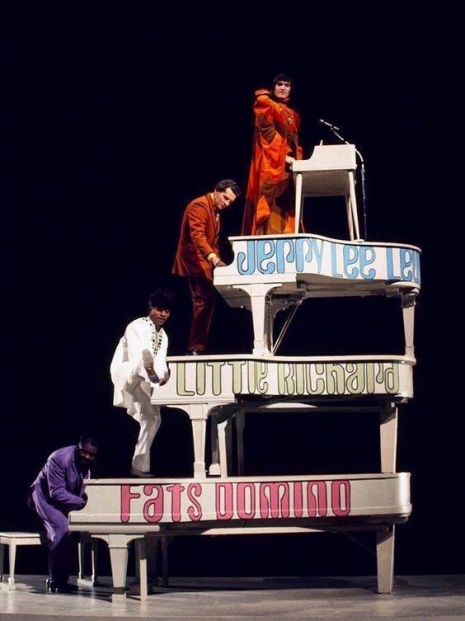
It was probably no accident that the band chose a metaphor of being controlled by a sinister puppet master. After all, the Monkees’ story is the most vivid example in rock history of a band struggling to seize the means of production (we call them “instruments”) from the corporate overlords that had conjured them into being in the first place—in the show, Auger actually uses the word conjure to summon them into being. Later on in the show, the four fellows sing a discordant little ditty called “Wind Up Man” (as wind-up men), which included lyrics like this:

It was probably no accident that the band chose a metaphor of being controlled by a sinister puppet master. After all, the Monkees’ story is the most vivid example in rock history of a band struggling to seize the means of production (we call them “instruments”) from the corporate overlords that had conjured them into being in the first place—in the show, Auger actually uses the word conjure to summon them into being. Later on in the show, the four fellows sing a discordant little ditty called “Wind Up Man” (as wind-up men), which included lyrics like this:
I’m a wind up man
Programmed to be entertaining
Turn the key
I’m a fully automatic
Wind up man
Invented by the teeny bopper
Turn me on
And I will sing a song about a
Wind up man
As mentioned, it would seem that the stress of being the world’s first purely manufactured rock and roll TV sensation had gotten to the boys…...
The show features a fair bit of material that never made it onto any of the Monkees’ record releases. The most interesting of them, by far, is a composition written and performed by Nesmith called “Naked Persimmon” that shows as vividly as possible in what direction Nesmith’s musical ambitions were headed, namely the country rock of the First National Band, which would be Nesmith’s post-Monkees solo project. In case you were in any way unclear that Nesmith was looking to fuse country and rock, “Naked Persimmon” will remove all doubt. It’s a kind of portmanteau song that required some TV editing magic to present properly, as it featured two Michael Nesmiths trading “rock” and “country” verses, each Nesmith duly mystified whenever the other’s verse intrudes on his own.
The end sequence of the show is every bit the everything and the kitchen sink Sixties freakout that you would devoutly wish for and expect.
As with Head, it must be said that 33⅓ Revolutions per Monkee was not a resounding success in commercial terms. NBC was so unenthusiastic about the special that it chose to run it against the Oscar ceremony. Then some engineer accidentally presented it out of sequence, thus ensuring that nobody in the home audience would be able to follow any of the show’s thematic hijinks. Peter Tork left the band right after the special, buying himself out of his contract and bringing the main period of Monkees to a definitive end.
I find almost all of it pleasurable on its own terms, though, and I’d recommend it in a heartbeat for that patented Monkee note of amiable mindfuckery. See it now.
Labels:
dangerous Minds,
the Monkees
Friday, June 9, 2017
The arctic seed bank that was going to save us all is flooding (UPDATE)
see UPDATE BELOW first article:
from Boing Boing:

Svalbard seed vault exterior
Strategically placed to survive any natural disaster, this winter's rains flooded the arctic seed bank. The bank wasn't destroyed, but it shows how fast things are a changing.Turns out the Svalbard seed vault is probably fine
The Guardian:
It was designed as an impregnable deep-freeze to protect the world’s most precious seeds from any global disaster and ensure humanity’s food supply forever. But the Global Seed Vault, buried in a mountain deep inside the Arctic circle, has been breached after global warming produced extraordinary temperatures over the winter, sending meltwater gushing into the entrance tunnel.
The vault is on the Norwegian island of Spitsbergen and contains almost a million packets of seeds, each a variety of an important food crop. When it was opened in 2008, the deep permafrost through which the vault was sunk was expected to provide “failsafe” protection against “the challenge of natural or man-made disasters”.
But soaring temperatures in the Arctic at the end of the world’s hottest ever recorded year led to melting and heavy rain, when light snow should have been falling. “It was not in our plans to think that the permafrost would not be there and that it would experience extreme weather like that,” said Hege Njaa Aschim, from the Norwegian government, which owns the vault.
from Popular Science:
Global Crop Diversity Trust via Flickr
Update 5/22: Recently, media reports emerged of water leaking into the entryway of the Svalbard Global Seed Vault, a facility that stores backup seeds for other seed banks all over the world. The facility is designed to be a backup for the backups. In an e-mail to Popular Science, Hege Njaa Aschim—communications director of the Norwegian Government-led organization Statsbygg, confirmed that the leaks happened last fall, during a time of high temperatures and unusual rainfall in the Svalbard area.
“This fall—October 2016—we had extreme weather in Svalbard with high temperatures and a lot of rain—very unusual. This caused water intrusion into the tunnel leading to the seed vault. The seeds and the vault was never at risk. This was no flooding, but more water than we like. So we are doing measures to improve and secure the entrance and tunnel,” Aschim said.
Aschim added that this year, no water has leaked into the entryway. In October, the water made it about 15 meters into the 100 meter tunnel and then stopped, freezing solid. The volume of the water that leaked in is unknown.
Even before the events of October 2016, Statsbygg had already planned to take measures to waterproof the tunnel, which had an established tendency to let water in during the spring melt.
While the tunnel is overlain by soil and permafrost, subject to the vagaries of weather and climate changes, the seeds themselves are stored in a vault built into the rock of the mountain—about 110 meters from the entrance to the tunnel. Initially, the people working on the project thought that the permafrost near the tunnel entrance would re-form (or re-freeze) after construction of the tunnel disturbed the layer of frozen Earth. It did not.
Our original post from Friday continues below.
A failure at a fail-safe vault. The irony is delicious, but that’s not the whole story.
On its website, the Svalbard Global Seed Vault is described by Crop Trust—the nonprofit that runs it—as “a fail-safe seed storage facility, built to stand the test of time—and the challenge of natural or man-made disasters.” It holds backups of seeds from seed banks around the world, with the goal of preserving a legacy of crop diversity in the face of changing climate, natural disasters, and human conflicts. It’s operated for a little over nine years.
Then, on Friday, news spread that water from melting permafrost had gushed into the tunnel and frozen, making the floor slick with ice but not impacting the seeds. It would seem the fail-safe had failed. Or had it?
“Flooding is probably not quite the right word to use in this case,” says Cary Fowler, who helped create the seed vault. “In my experience, there’s been water intrusion at the front of the tunnel every single year.”
Fowler wasn't at the seed vault this year when the flooding (or 'flooding') in question took place, but has extensive knowledge of the project and facilities. He explains that a 100 meter long tunnel leads into the heart of the mountain where the seed vault is stored, running at a slight downward slope. At the base of the slope are two pumping stations to remove any water that might get in. Then there's a slight uphill section before you reach the doors to the vault itself, where the seeds are kept at 0.4 degrees Fahrenheit or -18 Celsius.
“The tunnel was never meant to be water tight at the front, because we didn’t think we would need that,” Fowler says. “What happens is, in the summer the permafrost melts, and some water comes in, and when it comes in, it freezes. It doesn’t typically go very far.”
Permafrost is a frozen layer of Earth that's meant to be permanent, but it can be damaged if temperatures rise, or if humans dig into it and create more ways for heat to enter. In this case, the area has been going through a record heatwave, and the construction of the tunnel nine years ago dug into the permafrost and made it more vulnerable. The combination means that near the entrance to the tunnel—where the overlying soil is thinner—meltwater can indeed make its way through. That’s why the designers installed the pumps in the first place.
“If there was a worst case scenario where there was so much water, or the pumping systems failed, that it made its way uphill to the seed vault, then it would encounter minus 18 [degrees celsius] and freeze again. Then there’s another barrier [the ice] for entry into the seed vault,” Fowler says. In other words, any water that floods into the tunnel has to make it 100 meters downhill, then back uphill, then overwhelm the pumping systems, and then manage not to freeze at well-below-freezing temperatures. Otherwise, there's no way liquid is getting into the seed bank—so the seeds are probably safe.
That doesn’t mean that water getting into the tunnel and freezing isn’t alarming. This is Svalbard: land of snow, ice, and polar bears. Meltwater is still worrying, even if it isn’t an immediate panic-inducing threat. That’s why, as The Guardian reports, the Norwegian government (which operates the facility) is taking action.
“There are not a lot of seed vaults in the middle of mountains in Svalbard, so it's really important. They need to study where the water is coming in and the amounts to figure out what the situation is,” Fowler says. The groups that operate the seed vault have been looking into the issue for years now, and it appears that they are moving forward with plans to waterproof the tunnel, preventing ice from building up on the floor, and keeping that seasonal influx of water from getting in.
“At the end of the day we have to realize that in a sense, everything is relative with this initiative,” Fowler says. “This whole planet is warming, and that includes Svalbard.”
Even as temperatures increase, areas near the poles like Svalbard will remain colder than other places on the planet, meaning it will take less energy to cool a seed vault down to the required temperatures.
“I think Svalbard is a good place to start from,” Fowler says, “It’s a better starting point that Memphis or New York or just about anywhere else.”
Still worried? Maybe this will help you exhale: “We did this calculation; if all the ice in the world melted—Greenland, Arctic, Antarctic, everything—and then we had the world's largest recorded tsunami right in front of the seed vault. So, very high sea levels and the worlds largest Tsunami. What would happen to the seed vault?” Fowler says. “We found that the seed vault was somewhere between a five and seven story building above that point. It might not help the road leading up to the seed vault, but the seeds themselves would be ok."
Labels:
Apocalypse,
climate change,
DOOMSDAY,
Environment,
SEEDS
Thursday, June 8, 2017
PUNK ROCK BOB MOULD
Remember when Hüsker Dü and Bob Mould put out a record called "Land Speed Record"? and when they would open for Black Flag!
Well here's a photo of Bob Mould from one of those shows circa 1982.

This photo did appear in my book FUCK YOU TOO.
Well here's a photo of Bob Mould from one of those shows circa 1982.

This photo did appear in my book FUCK YOU TOO.
Wednesday, June 7, 2017
THE HOOD INTERNET presents 40 YEARS OF HIP HOP
in 4 minutes . .
Over 150 songs from more than 100 artists representing 40 years of hip hop all crammed into 4 minutes. It’s not a chronological history of hip hop. It’s rappers from different eras finishing each other’s rhymes over intersecting beats, all woven together to make one song.
Audio stream/download at:
soundcloud.com/hoodinternet/40-years-of-hip-hop
Featuring:
2 Pac, 50 Cent, A Tribe Called Quest, Afrika Bambaataa, Audio Two, AZ, Beastie Boys, BG, Big Pun, Biz Markie, Black Rob, Black Sheep, Blackstreet, Bobby Shmurda, Boogie Down Productions, Busta Rhymes, Cali Swag District, Cam'ron, Chamillionaire, Chance The Rapper, Clipse, Common, Craig Mack, Cypress Hill, David Banner, De La Soul, Dead Prez, Digable Planets, Digital Underground, DJ Jazzy Jeff & The Fresh Prince, DJ Kool, DJ Quik & Kurrupt, DMX, Doug E Fresh, Dr. Dre, Drake, Eazy-E, Eminem, Eric B. & Rakim, Funky 4+1, Gang Starr, Geto Boys, Grandmaster Flash & The Furious Five, GZA, House of Pain, Ice Cube, J-Kwon, Jadakiss, Jay Electronica, Jay-Z, JJ Fad, Juvenile, Kanye West, Kendrick Lamar, Kid Cudi, KRS-One, Lauryn Hill, Lil Jon & The Eastside Boys, Lil Kim, Lil Troy, Lil Wayne, LL Cool J, Ludacris, Madvillain, MC Shan, Meek Mill, MF DOOM, Missy Elliott, Mobb Deep, Montell Jordan, MOP, Nas, Naughty By Nature, Nelly, Nicki Minaj, Notorious BIG, NWA, Ol Dirty Bastard, Outakst, Pete Rock & CL Smooth, Petey Pablo, Pharaohe Monch, Public Enemy, Puff Daddy, Quad City DJs, Rich Boy, Rick Ross, Rob Base & DJ E-Z Rock, Run-DMC, Salt N Pepa, Scarface, Schoolly D, Sir Mix-A-Lot, Skee-Lo, Slick Rick, Snoop Dogg, Soulja Boy, Sugarhill Gang, T La Rock, T-Wayne, T.I., Terror Squad, The Fat Boys, The Fatback Band, The Fugees, The Game, The Pack, The Pharcyde, The Roots, Three 6 Mafia, Tone Loc, Tyga, UGK, Usher, UTFO, Warren G, Whodini, Wreckx-N-Effect, Wu-Tang Clan, Ying Yang Twins, Young Gunz
BONUS:
Trump Picks Fights on Twitter, Pisses Off World: A Closer Look
Over 150 songs from more than 100 artists representing 40 years of hip hop all crammed into 4 minutes. It’s not a chronological history of hip hop. It’s rappers from different eras finishing each other’s rhymes over intersecting beats, all woven together to make one song.
Audio stream/download at:
soundcloud.com/hoodinternet/40-years-of-hip-hop
Featuring:
2 Pac, 50 Cent, A Tribe Called Quest, Afrika Bambaataa, Audio Two, AZ, Beastie Boys, BG, Big Pun, Biz Markie, Black Rob, Black Sheep, Blackstreet, Bobby Shmurda, Boogie Down Productions, Busta Rhymes, Cali Swag District, Cam'ron, Chamillionaire, Chance The Rapper, Clipse, Common, Craig Mack, Cypress Hill, David Banner, De La Soul, Dead Prez, Digable Planets, Digital Underground, DJ Jazzy Jeff & The Fresh Prince, DJ Kool, DJ Quik & Kurrupt, DMX, Doug E Fresh, Dr. Dre, Drake, Eazy-E, Eminem, Eric B. & Rakim, Funky 4+1, Gang Starr, Geto Boys, Grandmaster Flash & The Furious Five, GZA, House of Pain, Ice Cube, J-Kwon, Jadakiss, Jay Electronica, Jay-Z, JJ Fad, Juvenile, Kanye West, Kendrick Lamar, Kid Cudi, KRS-One, Lauryn Hill, Lil Jon & The Eastside Boys, Lil Kim, Lil Troy, Lil Wayne, LL Cool J, Ludacris, Madvillain, MC Shan, Meek Mill, MF DOOM, Missy Elliott, Mobb Deep, Montell Jordan, MOP, Nas, Naughty By Nature, Nelly, Nicki Minaj, Notorious BIG, NWA, Ol Dirty Bastard, Outakst, Pete Rock & CL Smooth, Petey Pablo, Pharaohe Monch, Public Enemy, Puff Daddy, Quad City DJs, Rich Boy, Rick Ross, Rob Base & DJ E-Z Rock, Run-DMC, Salt N Pepa, Scarface, Schoolly D, Sir Mix-A-Lot, Skee-Lo, Slick Rick, Snoop Dogg, Soulja Boy, Sugarhill Gang, T La Rock, T-Wayne, T.I., Terror Squad, The Fat Boys, The Fatback Band, The Fugees, The Game, The Pack, The Pharcyde, The Roots, Three 6 Mafia, Tone Loc, Tyga, UGK, Usher, UTFO, Warren G, Whodini, Wreckx-N-Effect, Wu-Tang Clan, Ying Yang Twins, Young Gunz
BONUS:
Trump Picks Fights on Twitter, Pisses Off World: A Closer Look
Labels:
hip-hop,
mash-up remixes,
Video
Tuesday, June 6, 2017
A History of Anti-Fascist Punk Around the World in 9 Songs
from Pitchfork:
In its four decades, punk has meant many different things to many different people. Its relationship to fascism, the specter of which has stopped rattling its chains from history books and re-appeared in the West, is one of the most complicated examples of how aesthetics and philosophy can appeal to both anti-authoritarian and deeply repressive positions. You can find it in punk’s beginnings, as a reaction to the cultural forces of generations prior, the long shadow of World War II among them. Ron Asheton of the Stooges collected and wore Nazi memorabilia to signify his bond with his father, a former Marine Corps pilot. Sid Vicious’ swastika was a fuck-you to his parents’ generation, and largely orchestrated by the (Jewish) Malcolm McLaren. And the electric eels just wanted to piss everyone off equally.
Look no further than the formation of Rock Against Racism (RAR) for a sub-story that contextualizes just how thin the line can be when it comes to manipulating fascist symbolism. In response to a growing National Front presence in England during the mid-’70s, RAR united rock and reggae subcultures (and more importantly, black and white folks). The organization was closely affiliated with the Anti-Nazi League, a public effort of the Trotskyist Socialist Workers Party; the strict party line embedded in its core philosophy felt suffocating to some. In the case of peace-punk band Crisis, a RAR favorite, bassist Tony Wakeford (who had been a Socialist Workers Party member) and guitarist Douglas Pearce (who had been involved with the International Marxist Group) began to feel so alienated that they formally split from RAR. Wakeford and Pearce went on to form neofolk group Death in June, which began its career playing with the aesthetics of paramilitary fascism (Nazism in particular) as satire—stances that became much muddier from there. Wakeford got the boot from the group in 1984 for his relationship at that time with the National Front, which lasted less than a year; these days, for his part, he is publicly critical of the far right. But Pearce, who keeps Death in June active still, continues to court controversy.
Similarly, the splintering of both the UK and U.S. labor movements, under pressure from Thatcher and Reagan during their tenures, brought about both racist skinheads and skinheads who reacted by speaking out against racism. All this ongoing friction and subsequent reaction, embedded in punk’s formation and carried through along multiple veins to the present, has also created some of the best and most relevant music to directly critique fascism in its many iterations. Here, we present just a few, shying away from many of the more obvious and well-known choices here (Dead Kennedys’ “Nazi Punks Fuck Off,” Oi Polloi’s “Bash the Fash,” etc.)
Johannesburg, South Africa, 1977: National Wake, “International News”
Following the 1976 Soweto uprising, in which students protesting apartheid were murdered by state police, Ivan Kadey and brothers Gary and Punka Khoza did what countless others have done when feeling helpless and frustrated, in need of a voice: they started a punk band. They mixed Stooges-esque garage, the repurposed disco structures and acerbic political analysis of bands like the Pop Group and Gang of Four, two-tone ska, reggae, and African polyrhythms into one heady setlist. But more on the rowdy and raw hard-rock end of things, “International News” took aim at the role of the international media in perpetuating both apartheid and the atrocities of the Angolan War of Independence with sensationalistic reporting. Unsurprisingly, National Wake found themselves the subject of state police surveillance and censorship, making it difficult to secure spaces to play. The pressure eventually split the band apart, but they hadn’t been forgotten; preserved through tape trading and Kadey’s own record-keeping, their recorded material is now available in its original, uncensored condition thanks to Light in the Attic.
Belgium, 1977: Basta, “Abortus Vrij de Vrouw Beslist!”
Those who have never had their reproductive systems regulated by the government may wonder why a song about abortion rights appears on a list of anti-fascist punk songs; those who know the danger of electing Mike “Burial or Cremation for Aborted and Miscarried Fetuses” Pence to one of the highest offices in the land may not. This 7-inch was Basta’s only release, and one of the first Belgian punk releases of any sort. Beyond this significance, the song is incredibly catchy, with a saxophone line reminiscent of Lora Logic’s dissonant contributions to X-Ray Spex and Essential Logic, and a shouted chorus that was a common phrase at pro-choice protests (essentially meaning, “yes, abortion for women!”). Belgium was actually one of the last countries to legalize abortion (not until 1990!), which made Basta’s urgent-sounding record even more significant: the sleeve listed clinics where abortions could safely be obtained.
Rotterdam, Netherlands, 1978: The Rondos, “Which Side Will You Be On?”
The Rondos were Maoist punks, leftist militants who provoked everyone from the Dutch Communist CPN party to (closed-mindedly) Rastafarian culture to Crass, who held the Rondos at least partially responsible for the violence that often characterized Crass shows starting in 1979 (when the two bands played together) onward. From the Rondos’ own biography: “Were we really communists? We assented to it half mockingly and half seriously. In the beginning, our lyrics were non-political or generally ‘anti.’ Wayward, anyhow. Over time we became more serious about our communist image. More fanatical too, due to pressure from the outside.” They had their own magazine (Raket, or Rocket) and alternative bookshop (Raketbase), a hub for the early Dutch punk scene. “Which Side Will You Be On?” was an urgent pogo and a call to action to do something, rather than sitting around talking endlessly about strategy. One cannot, after all, fight fascism by words alone.
Austin, Texas, 1980: The Dicks, “The Dicks Hate the Police”
A blatantly Communist band fronted by an unapologetic fat gay man in Texas released their first single, in which said singer barked in the voice of a violent cop hell-bent on abusing his power against the marginalized... to impress his parents. The song contained few words and fewer chords, and yet, with an arch sneer, the singer—Gary Floyd, a genuine punk hero deserving of recognition beyond the underground—communicated the essence of state power deployed in its most wretched everyday form. “The Dicks Hate the Police” is, at least to this writer, one of the greatest songs of all time, punk or not. Innumerable covers—chief among them Mudhoney’s most famous one—support this theory.
Essex, England, 1980: Poison Girls, “Bully Boys”
Over 40 and differing from the traditionally attractive frontwoman archetype, Jewish refugee Vi Subversa found herself beloved by Crass and friends upon starting up her first punk band. Inspired by the wryness and hookiness of the Buzzcocks, Subversa brought a delicate balance of thoughtful consideration and pummeling ferocity to the burgeoning peace-punk movement. Her history of real-world activism also helped to accomplish some actual work against nuclear disarmament, among other causes. “Bully Boys” was a remarkably catchy little ditty, all buzzsaw guitars, throaty vocals, and punchy drums in service of implicating the role of machismo in National Front violence. The band said that the track, along with “The Bremen Song” (about the Holocaust), led to racist skinheads attacking them at gigs and at home. Subversa’s lyrics were less “the personal is political” in the sense of isolating her experiences as being characteristic of grander political trends, and more “the political is personal,” focusing on how political systems manifest themselves in everyday life.
East Berlin, 1983: Namenlos, “Nazis Wieder in Ostberlin”
It’s unsurprising that East Germans struggling through the stultified economic conditions of the state-controlled Soviet German Democratic Republic found the crudest impulses of anti-authoritarianism in punk aesthetics to be an effective way of voicing their protest—and that the government responded to them as a direct threat. State harassment, police beatings, and apartment raids were regular parts of punk life, forcing many street kids into churches for sanctuary, where they became politicized, mixing with varying civil rights and environmental activist groups who also needed that protected space to meet. Namenlos were among this newly, ferociously politicized breed, employing wiry rock’n’roll riffage and direct lyrics with appropriate seriousness given their environment. The government doubled down on state repression rather than loosening it, and “Nazis Wieder in Ostberlin” (“Nazis Again in East Berlin”) landed three members of Namenlos behind bars. They were held in jail for six months without full charges while being interrogated, and were eventually sentenced to 18 additional months in Stasi prison for their “anti-government lyrics.” Even public support for Namenlos could land punks in jail for months on end. And yet the fire started by mixing disenfranchised street kids and politically savvy strategists couldn’t be extinguished once it’d been set: an organized youth protest movement, punks included, was no small part of the political rebellion that eventually toppled the Berlin Wall.
San Pedro, California, 1984: Minutemen, “Political Song for Michael Jackson to Sing”
So dig this big crux: Think of Mike Watt and D. Boon as the blue-collar socialist punk versions of Bert and Ernie. Friends since age 13, the duo’s oscillating heartbeat is what makes Minutemen so beloved and still relevant today. While the lyrics to this avant-garde punk classic are the least didactic on this list, they are no less direct than any others, and no less evocative (“Me, naked with textbook poems spout fountain against the Nazis”). How do we assert our politics through song, Boon asks, making sincerity a strength rather than a weakness. A crucial question for anyone who’s ever made an impassioned argument and thought, “I must look like a dork”—particularly at a time when neo-Nazis rely on chaotic disdain for anyone who cares too much as provocation meant to disarm.
Santiago, Chile, 1984: Los Pinochet Boys, “La Música del General/Esto Es Pinochet Boys”
At the most repressive point of the Pinochet dictatorship, Daniel Puente Encina formed an explicitly anti-fascist punk band with his friends and called it Pinochet Boys. Their first single? “Music of the General.” This was not the kind of punk danger most Americans are familiar with; it was not even a Green Room-type scenario. This was treason against a fascist state. With every show a secret, risking shut-down by military police, Pinochet Boys gigs were places for young, emerging activists to meet and strategize. The youth movement would become a crucial part of the revolution that led to the Chilean national plebiscite in 1988, a referendum that finally forced the Pinochet regime from power and paved the road for democracy. “This machine kills fascists,” indeed—though Encina and the other Boys were exiled in 1987. From a purely musical standpoint, the song was half classic sing-along punk-band-name-as-anthem and half bizarre, zippy new wave outer-space transmission, one of the weirdest and coolest earworms around. Even if it hadn’t played a historically documented and practical part in actually bringing down a 16-year dictatorship, it’d be worthy of inclusion here.
Mexico City, 1990: Massacre 68, “Sistema Podrido”
Named for those murdered in 1968 while peacefully protesting the repressive Díaz Ordaz government (as part of the Mexican Dirty War), Massacre 68 were fairly straightforward thrashers with lyrics bluntly critical of the government corruption and state violence surrounding them. In 1988, a rigged election declared the Institutional Revolutionary Party the new ruling party, though with phenomenally low voter turnout due to a “crashed” system—a cover that was later revealed to have been the result of corruption and burned ballots. Massacre 68 directly critiqued this election in “Sistema Podrido” (“Rotten System”), off their first LP, 1990’s No Estamos Conformes. These are perhaps the most ripping solos committed to a record about horrendously corrupt voter fraud. But stateside listeners didn’t get hip to Massacre 68 until L.A. label Huarache Records re-released their material in the early 2000s, right around the time documents were finally revealed detailing the Mexican government’s role in both the ’68 murders and the ’88 election fraud.
Labels:
anti-fascist,
international,
Punk
Subscribe to:
Posts (Atom)











